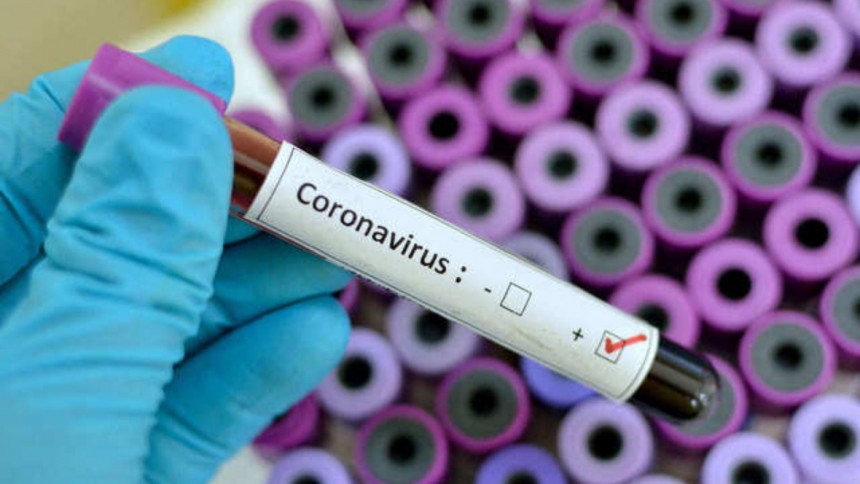CoViD-19: Facts vs fear

Globally, the latest threat to public health is the "Coronavirus Disease-2019", (CoViD-19), which is essentially a respiratory disease.
It was first detected in Wuhan, China, in December 2019.
What is the coronavirus?
It is a large family of similar viruses, which are responsible for most common illnesses, ranging from the common cold and cough to more serious illnesses, such as Middle-East Respiratory Syndrome (MERS) and Severe Acute Respiratory Syndrome (SARS).
The virus responsible for CoViD-19 is named Severe Acute Respiratory Syndrome Corona Virus-2 (SARS-CoV-2), and it is a new member of the coronavirus family.
All viruses in the coronavirus family are "Zoonotic", meaning that they are transmitted from animals to humans. For example, MERS-CoV is transmitted by dromedary camels, SARS-CoV was associated with civet cats, and the most likely ecological reservoirs for SARS-CoV-2 are bats. Scientists, however, speculate that the virus has been transmitted to humans from another intermediate animal host. These intermediate animals may either be domesticated or wild, and have not yet been identified.
CoViD-19 and the current situation
Detailed epidemiological and clinical description of the first 425 CoViD-19 patients in Wuhan, China shows that the median age of the patients was 59 years, and that 56 percent of the patients were male. The morbidity and mortality were higher among the elderly and among those who had pre-existing chronic illnesses (such as hypertension, heart disease, and diabetes). Not a single one of them was below the age of 15 years. This could be for two reasons: either such children were less likely to be infected by CoViD-19, or their symptoms were so mild that their infections could not be detected. This is important information, and is helping public health experts develop effective strategies to contain and prevent the spread of CoViD-19.
Based on existing data, CoViD-19's mortality rate is about 2 percent. However, the authors of another article published in a journal report a mortality of 1.4 percent among 1,099 CoViD-19 patients with confirmed lab diagnosis. If we assume that the number of untested people—those who had few symptoms or none—was several times higher, then the actual mortality rate might be less than 1 percent.
From this, we can assume that the mortality rate in CoViD-19 will still be:
i) Higher than severe seasonal influenza (the mortality rate of which is 0.1 percent), or the influenza pandemics in 1957 and 1968.
ii) But lower than MERS (which has a mortality rate of 36 percent) and SARS (which has a mortality rate of 9-10 percent).
To develop effective strategies and tools to control these coronaviruses, the experts take into consideration how quickly and efficiently a particular type of coronavirus attacks the human respiratory tract. Based on the information available till now, one CoViD-19 infected person can infect approximately an additional two persons. Until we can break the chain of infection, and bring this number down to below one, the CoViD-19 infection will probably continue to spread.
It should be noted here that the symptoms are usually very mild in the first few days after being infected with CoViD-19. But during that time, the concentration of the virus is extremely high inside the mouth and upper part of the throat of the infected person. As a result, during those first few days, a CoViD-19 infected person can easily infect an uninfected person.
To prevent the spread of CoViD-19, several countries, including China and the United States, have imposed temporary travel restrictions. On a temporary basis, such restrictions may help to reduce the spread of the virus. However, considering the overall situation, we need to be prepared to comply with some of the more restrictive requirements, such as social distancing, voluntary isolation at home, postponing large gatherings, working from home whenever possible, etc.
In the meantime, various research institutes around the world are working tirelessly to develop an effective vaccine to tackle CoViD-19. The first trial is expected in May-June of this year.
How CoViD-19 spreads
According to available data, SARS-CoV-2 can spread directly through small droplets, which are released when a SARS-CoV-2 infected person coughs, sneezes or exhales.
Often, droplets containing SARS-CoV-2 also land on objects and surfaces around the person. An uninfected person can be infected by SARS-CoV-2 by touching these contaminated objects or surfaces, and then touching their eyes, nose or mouth.
How to prevent CoViD-19
i) Wash hands frequently and regularly. Please note that 90 percent of people do not wash their hands properly—thumbs and fingertips are often not cleaned. The World Health Organization has a video link on how to wash hands properly called, "WHO: How to handwash? With soap and water", available on YouTube.
ii) Avoid shaking hands, hugging and kissing in workplaces and social gatherings.
iii) Maintain a distance of at least three feet from someone who is coughing or sneezing.
iv) Stop touching your eyes, nose and mouth unnecessarily.
v) Cover your nose and mouth with disposable tissue during coughing or sneezing, and ask others to do the same. After use, the tissue must immediately be dumped into a trash can, so that it does not come into contact with anyone else.
vi) Coronaviruses cannot survive at normal cooking temperature (70 degree C). Therefore, as a general rule, raw or lightly cooked animal products should be avoided. Be careful when handling and cooking raw meat, raw milk, raw egg or raw fish.
vii) Stay home, if you feel unwell.
viii) But if you have a fever, cough and/or breathing difficulties, you must call the Covid-19 helpline, and see a doctor.
Signs and symptoms of CoViD-19
One thing we must remember is that most people infected with CoViD-19 have very mild signs and symptoms. Some people may have no symptoms at all.
About 80 percent of the patients recover completely without any treatment.
The most common symptoms are: fever, fatigue, and dry cough. Some may have cold, sore throat, body ache and diarrhoea.
But for the elderly and those who have pre-existing chronic illnesses (such as hypertension, heart disease, and diabetes), the signs and symptoms can be severe, even life threatening.
If someone has a fever, cough and/or breathing difficulties, irrespective of her/his age and pre-existing chronic illnesses, s/he must consult a doctor. However, if the sick person is in a country where there is a CoViD-19 helpline, s/he should call the helpline first without going directly to the doctor, and then act as instructed.
Treatment of CoViD-19
To date, no vaccine or targeted antiviral treatment is available against CoViD-19. The patients are provided supportive treatment and care to relieve symptoms. In severe cases, however, some doctors are trying out various antiviral drugs, as well as traditional Chinese medicine. In the near future, there may be a more effective treatment regimen, assuming successful clinical trials.
Finally, we must all keep in mind that these infectious diseases have come before, and will come again, and we have no choice but to be prepared for them. Preparation needs to be at the personal, family, and societal levels, as well as at the national, regional, and international levels. In this era of globalisation, viruses and bacteria have also been globalised. It is not possible for any one person, or one country, to deal with these challenges individually. The sooner we understand this, the sooner we will be able to ensure the health and well-being of our populations.
Dr Monica Beg, Chief, and Global Coordinator, HIV/AIDS Section, United Nations, Vienna, Austria. Her Twitter handle is: @MonicaBeg


 For all latest news, follow The Daily Star's Google News channel.
For all latest news, follow The Daily Star's Google News channel. 



Comments